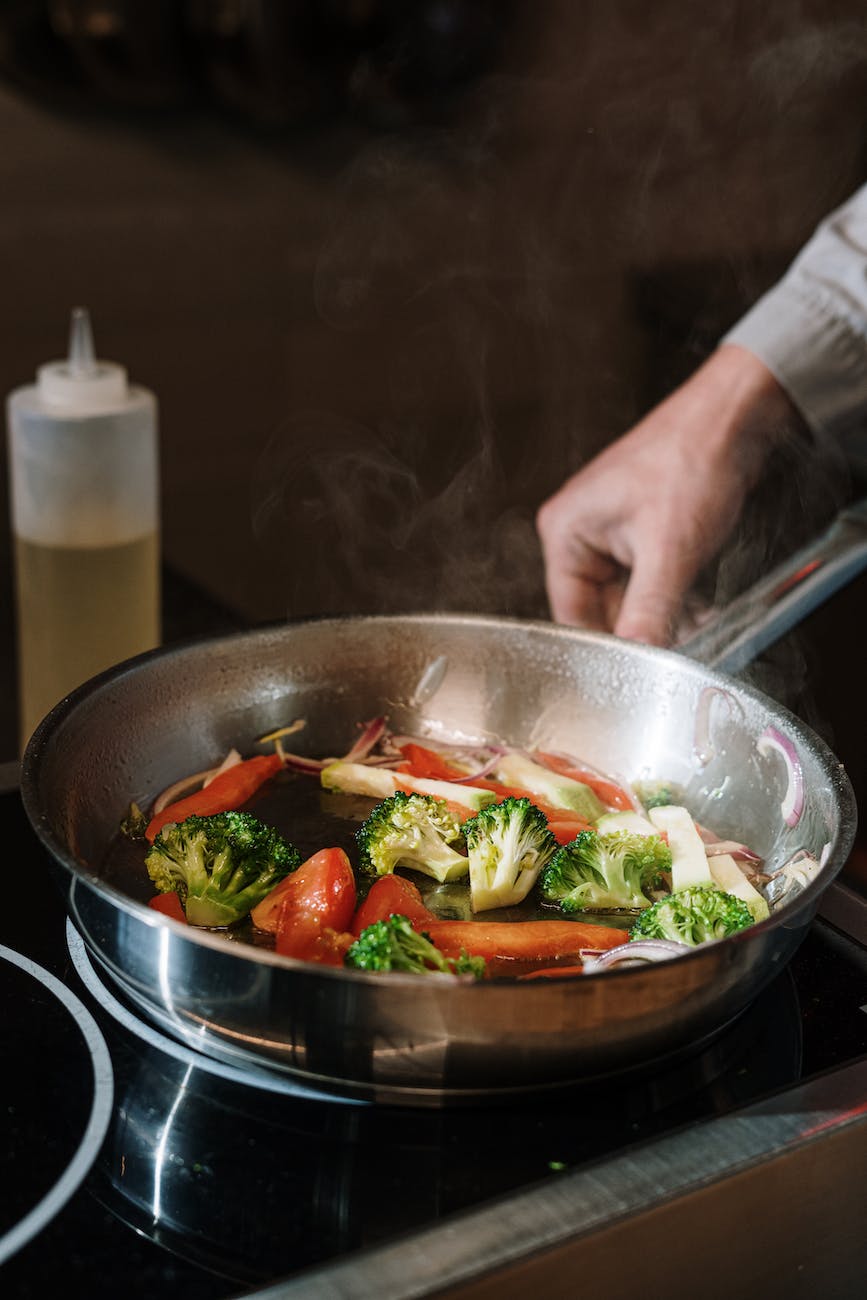Widespread adoption of stainless steel cookware occurred during the mid-20th century, coinciding with advancements in metallurgy and manufacturing techniques.
There can be multiple types of the stainless steel pan. They are either full clad or feature a metal cores which is sometimes called “sandwich”. Biggest disadvantage of these pans is that food tends to sticks to the surface. However there is a way how to achieve non-sticking even on these pans. Stainless-Steel pans are great for cooking acidic food, sauces and soups. We recognize two types of the pans:
Series about Pans
Choosing a right pan for your cooking is as much important as anything else. In these articles I will describe my learnings on this topic based on type of pan:
- Stainless Steel Pan
- Carbon & Cast Iron Pan
- Non-Stick Pan
Science related to pans:
- Leidenfrost effect
- Maillard reaction
Metal Core “Sandwich” Pans
These are usually most affordable option amongst stainless steel pans. Thick metal core is at the bottom of the pan. Side of the pot are usually made from thin sheet of stainless steel. These pans tend to cook from bottom, therefore they heat food unevenly especially from sides.
They are not particularly good choice for stewed recipes or braising where even heat from sides is often required to achieve even cooking.
There are usually two types of cores:
Aluminium core
Aluminium is light there it makes pan lighter, however on cost of heat retention. There are also versions with thicker core, which improves heat retention while keeps pan light.
Steel core
Heavy steel is great in retaining heat, pan can achieve very high temperatures. This comes at cost that pan is usually heavier, more expensive but also more durable with better temperature stability.
Full Clad Pans
Stainless steel layers extend from the base of the pan up to the rims, ensuring durability throughout the entire cooking vessel. Fully clad pans offer the benefits of even heat distribution not only across the bottom of the pan but also up the sides, allowing for more precise cooking and uniform results. Additionally, they provide durability and resistance to warping, making them popular choices among home cooks and professional chefs alike.
Thickness of these pans varies. They can be made of several layers of metal. Material of these layers can vary. This greatly influences properties of the given pan.
These pans are the best choice, however they come at higher price as there is more metal required and harder manufacturing process involved.
How to achieve non-stickiness?
First of all, never put oil in to the cold stainless steel pan!
In order to get food sticking less to the surface is to achieve Leidenfrost effect. In short heating the pan to approximately 193 °C (379 °F). However if we need to make two eggs quickly it’s sometimes simpler to use hybrid or teflon pan.
Don’t forget that in certain cases, like searing meat, we actually want food to stick to the cooking surfaces, in order to support Maillard reaction. In those cases it’s recommended to heat pan to up to 450°F (230°C).

2 comments / Add your comment below